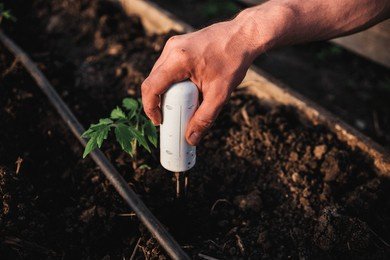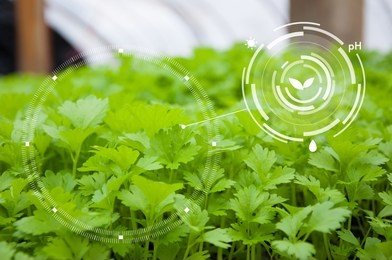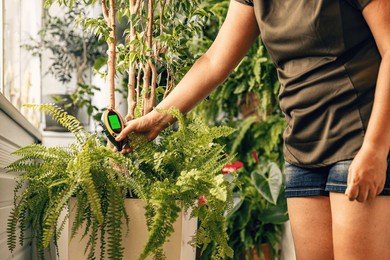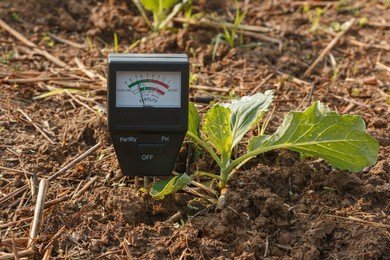Soil sensors, in particular, are fascinating tools that provide valuable insights into the world beneath our feet. In this blog, I'll take you on a journey to explore the different types of soil meters and their applications.

Unveiling the World of Soil Sensors
Before we dive into the various types of soil sensors, let's start with a brief overview of what these remarkable devices do. Soil sensors are scientific instruments that measure and monitor various soil properties. These properties include moisture content, temperature, pH levels, salinity, and more. Soil sensors play a pivotal role in agriculture, environmental science, and even construction, providing essential data for informed decision-making.
Types of Soil Sensors
1. Soil Moisture Sensors
Soil moisture sensors, also known as soil hygrometers, are among the most widely used soil sensors. These devices measure the amount of water content in the soil. They come in various forms, including:
Volumetric Soil Moisture Sensors: These sensors measure the volumetric water content in the soil, typically expressed as a percentage.
Tensiometers: Tensiometers monitor soil water potential or tension, indicating how hard plants must work to extract water from the soil.
Time-Domain Reflectometry (TDR) Sensors: TDR sensors use electromagnetic waves to provide accurate readings of soil moisture content.
Frequency-Domain Reflectometry (FDR) Sensors: FDR sensors analyze the dielectric properties of soil to estimate moisture content.
2. Soil Temperature Sensors
Soil temperature sensors are essential for understanding the thermal properties of the soil. They are particularly crucial in agriculture, as soil temperature affects seed germination, root growth, and microbial activity. Common types include:
Thermocouples: Thermocouples use the voltage generated at the junction of two different metals to measure soil temperature.
Resistive Temperature Devices (RTDs): RTDs determine temperature by detecting changes in the electrical resistance of a wire.
Thermistors: Thermistors utilize the resistance-temperature relationship to provide accurate soil temperature measurements.

3. Soil pH Sensors
Soil pH sensors measure the acidity or alkalinity of the soil, which is a critical factor for plant growth. These sensors help in determining whether the soil is suitable for particular crops. The two primary types are:
Electrochemical Sensors: Electrochemical sensors measure pH by detecting the concentration of hydrogen ions (pH) through chemical reactions.
Glass Electrodes: Glass electrodes are widely used in laboratories and field applications to determine the pH level in the soil.
4. Soil Nutrient Sensors
Soil nutrient sensors are essential for assessing the nutrient content in the soil, including essential elements like nitrogen, phosphorus, and potassium. These sensors come in various forms, including:
Ion-Selective Electrodes (ISE): ISE sensors measure the concentration of specific ions in the soil, such as nitrate, potassium, or ammonium.
Optical Sensors: Optical sensors use light absorbance or fluorescence to estimate nutrient levels in the soil.
5. Soil Salinity Sensors
Soil salinity sensors are crucial in areas where excess salt in the soil can harm plant growth. They measure the electrical conductivity of the soil, which is directly related to soil salinity.
Conductivity Sensors: These sensors measure the electrical conductivity of the soil and provide insights into its salinity levels.

6. Soil Compaction Sensors
Soil compaction sensors help in assessing how densely packed the soil is. Soil compaction can affect root growth and water infiltration. The two primary types are:
Penetrometers: Penetrometers measure soil compaction by assessing the resistance as a probe is inserted into the soil.
Pressure Plates: Pressure plates estimate the soil's ability to retain and transmit water under different pressures, offering insights into soil compaction.
7. Soil Erosion Sensors
Soil erosion sensors are specialized devices used to monitor the amount of sediment or soil erosion in water bodies, runoff, or construction sites. These sensors help in environmental monitoring and erosion control efforts.
8. Soil Permeability Sensors
Soil permeability sensors assess how easily water can pass through the soil. These sensors are commonly used in geotechnical and engineering applications.
Constant Head Permeameters: Constant head permeameters measure the permeability of soil by examining water flow through a soil sample.

9. Soil Gas Sensors
Soil gas sensors detect gases emitted from the soil, providing insights into microbial activity, soil respiration rates, and even greenhouse gas emissions.
Methane and Carbon Dioxide Sensors: These sensors monitor the concentration of gases like methane and carbon dioxide in the soil, which can be related to environmental and agricultural processes.
Conclusion
In the ever-evolving fields of agriculture, environmental science, and engineering, the diversity of soil sensors is astounding. These sensors, each tailored to measure specific soil properties, have revolutionized the way we understand and interact with the ground beneath our feet. If you are interested in our soil sensors, welcome to fill out the form at your right and contact us to get further information.

